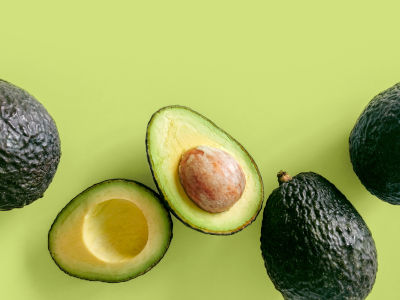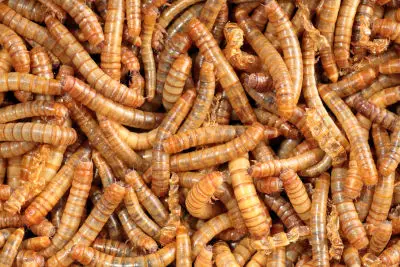How Long Does It Take for a Baby Lizard to Grow? A Guide to Understanding Lizard Growth Rates
Baby lizards are fascinating creatures that many people like to keep as pets. However, it’s important to understand the growth cycle of these creatures to ensure that they are receiving the proper care. One of the most common questions that people have about baby lizards is how long it takes for them to grow.
The answer to this question depends on the species of lizard. Some species, such as the leopard gecko, can reach maturity in as little as six months. Other species, such as the bearded dragon, can take up to two years to reach maturity. It’s important to research the specific species of lizard that you have to determine how long it will take for them to reach maturity.
| Are these foods dangerous for your Beardie? | |
| Avacado? Click here to learn, from this guide, if this food is dangerous |  |
| Superworms? Click here to learn, from this guide, if this food is dangerous |  |
Understanding the growth cycle of baby lizards is crucial for their health and well-being. By providing the proper care and nutrition, you can help your baby lizard grow into a healthy adult. In this article, we will explore the growth cycle of baby lizards and provide tips for ensuring that your pet is growing properly.
Life Cycle of a Baby Lizard
Baby lizards are born in a variety of sizes depending on the species. Some species, such as the green anole, are born at around 1 inch in length, while others, such as the Komodo dragon, are born at around 20 inches in length. Baby lizards are fully independent from birth and do not require parental care.
After hatching, baby lizards begin to grow quickly. They shed their skin regularly as they grow and can eat a variety of insects and other small prey. As they grow, they may change color or develop new markings.
The length of time it takes for a baby lizard to reach maturity varies greatly depending on the species. Some species, such as the green anole, reach maturity in just a few months, while others, such as the Komodo dragon, may take several years to reach maturity.
During their growth period, baby lizards may be vulnerable to predators. They may also face competition for food and other resources from other animals in their habitat. Despite these challenges, many baby lizards are able to survive and thrive, growing into healthy adults capable of reproducing and continuing the life cycle of their species.
Growth Rate Factors
Several factors can influence the growth rate of baby lizards. Environmental conditions, diet, and nutrition are among the most important factors that can affect the growth rate of a baby lizard.
Environmental Conditions
The environmental conditions in which a baby lizard lives can have a significant impact on its growth rate. Factors such as temperature, humidity, and light can affect the lizard’s metabolism and growth. For example, if the temperature is too low, the lizard’s metabolism may slow down, which can result in slower growth. On the other hand, if the temperature is too high, the lizard may become dehydrated, which can also affect its growth.
Diet and Nutrition
Diet and nutrition are also crucial factors that can affect the growth rate of a baby lizard. Baby lizards require a balanced diet that provides them with the nutrients they need to grow and develop. In the wild, baby lizards typically eat insects and other small animals. In captivity, they can be fed a diet that includes crickets, mealworms, and other insects. It is important to provide a varied diet to ensure that the lizard gets all the nutrients it needs.
In addition to a balanced diet, baby lizards also require adequate hydration. They should have access to clean, fresh water at all times. It is also essential to provide a suitable habitat that allows the lizard to regulate its body temperature and stay healthy.
Overall, the growth rate of a baby lizard depends on several factors, including environmental conditions, diet, and nutrition. By providing a suitable habitat and a balanced diet, owners can help ensure that their baby lizards grow and develop properly.
Comparison with Other Reptiles
Baby lizards grow at different rates depending on the species and their environment. However, compared to other reptiles, lizards have a relatively fast growth rate. For example, turtles and tortoises can take several years to reach maturity, while some snakes can take up to five years.
One of the reasons for the faster growth rate of lizards is their high metabolic rate. Lizards are ectothermic animals, which means that their body temperature is regulated by their environment. This allows them to use more energy for growth and development, as they do not have to spend as much energy on maintaining a constant body temperature.
Another factor that contributes to the fast growth rate of baby lizards is their diet. Most lizards are carnivorous and require a high protein diet to support their growth. They also need a variety of vitamins and minerals to develop healthy bones and muscles. In contrast, herbivorous reptiles like turtles and tortoises have a slower growth rate because their diet is lower in protein.
Overall, while baby lizards may take longer to grow than other animals like insects or rodents, they have a relatively fast growth rate compared to other reptiles. This is due to their high metabolic rate and carnivorous diet, which allows them to grow and develop quickly.
Conclusion
In conclusion, the growth rate of baby lizards varies depending on the species and the environmental conditions they are exposed to. Some species, such as the Anolis carolinensis, can reach maturity within a year, while others, such as the Gila monster, can take up to 10 years to reach adulthood.
Factors such as temperature, humidity, and food availability can significantly impact the growth rate of baby lizards. For example, if a baby lizard is not getting enough food, it may take longer to reach maturity or may not reach full size at all.
It is also important to note that while baby lizards may look small and fragile, they are capable of growing quickly and becoming quite large. As such, it is important to provide them with proper care and a suitable environment to ensure they can grow and thrive.
Overall, while there is no set timeline for how long it takes a baby lizard to grow, understanding the various factors that can impact their growth can help ensure they develop properly and reach their full potential.